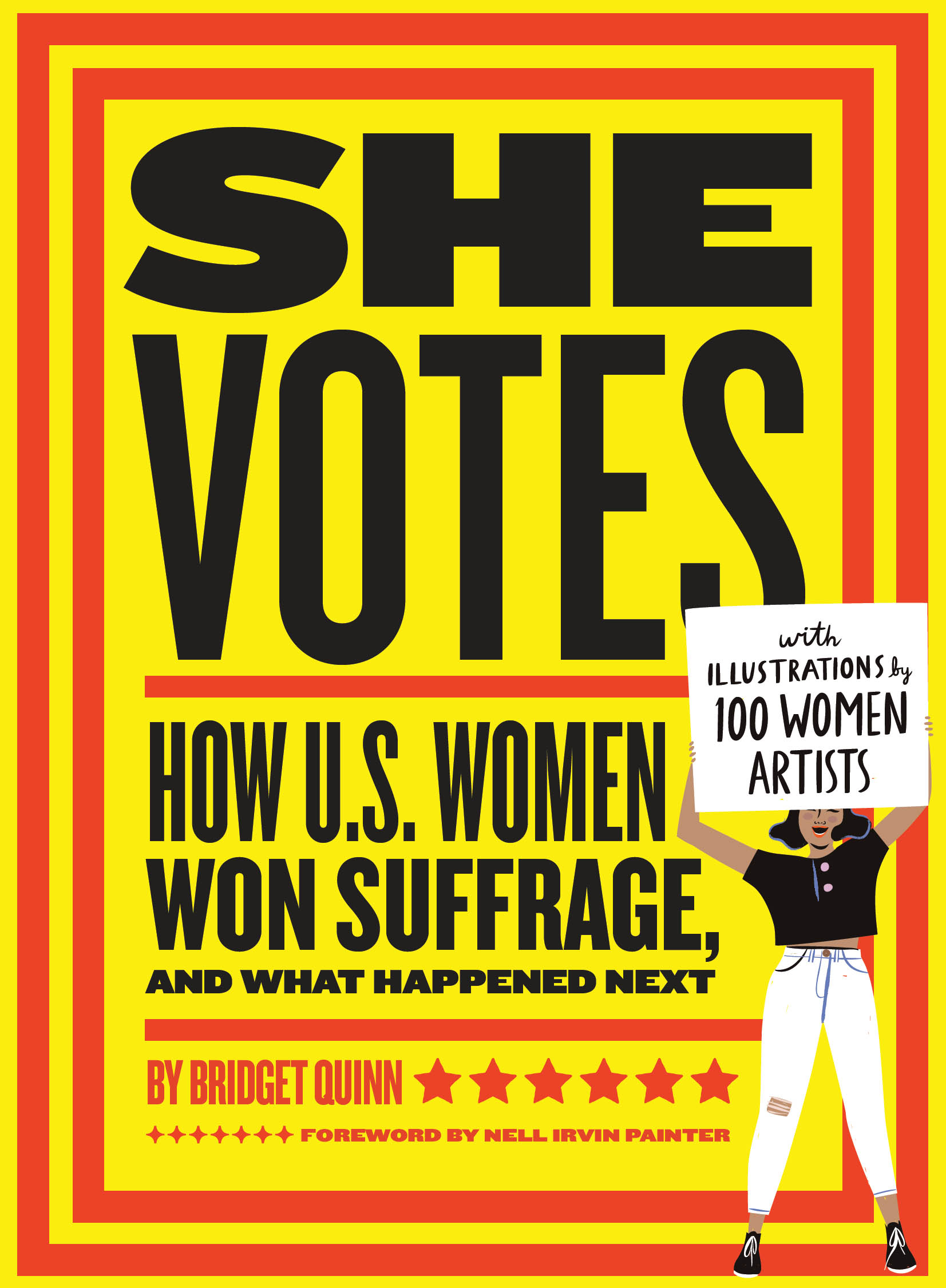

FOR ZUZU
REBEL GIRL & QUEEN OF MY WORLD

BUT WELL HAVE OUR RIGHTS; SEE IF WE DONT: AND YOU CANT STOP US FROM THEM; SEE IF YOU CAN.
SOJOURNER TRUTH
PROCEEDINGS OF THE WOMANS RIGHTS CONVENTION HELD AT THE BROADWAY TABERNACLE, IN THE CITY OF NEW YORK, ON TUESDAY AND WEDNESDAY, SEPT. 6TH AND 7TH, 1853.

SHE DID NOT MIND WORKING.
SHE WORKED TO CULTIVATE HER VOICE.
GERTRUDE STEIN
MISS FURR AND MISS SKEENE, 1922
Text copyright 2020 by Bridget Quinn.
Foreword copyright 2020 by Nell Irvin Painter.
Images copyright 2020 by Chronicle Books LLC.
All rights reserved. No part of this book may be reproduced in any form without written permission from the publisher.
ISBN 9781452173399 (epub, mobi)
Library of Congress Cataloging-in-Publication Data
Names: Quinn, Bridget, author. | Painter, Nell Irvin, author of foreword.
Title: She votes : how U.S. women won suffrage, and what happened next / by Bridget Quinn ; with a foreword by Nell Painter ; with illustrations by 100 women artists.
Identifiers: LCCN 2019047183 | ISBN 9781452173160 (hardcover)
Subjects: LCSH: WomenSuffrageUnited StatesHistoryJuvenile literature. | SuffragistsUnited StatesJuvenile literature.
Classification: LCC JK1898 .Q56 2020 | DDC 324.6/230973dc23
LC record available at https://lccn.loc.gov/2019047183
Design by Allison Weiner.
Typesetting by Frank Brayton.
Images coordinated by Mallory Farrugia.
Jacket illustrations by Libby VanderPloeg (front), Dani Pendergast (back left), and Simone Martin Newberry (back right).
Chronicle Books LLC
680 Second Street
San Francisco, California 94107
www.chroniclebooks.com

CONTENTS

FOREWORD


NELL IRVIN
PAINTER
HERE WE ARE, a century after the passage of the Nineteenth Amendment to the United States Constitution allowing women the voteallowing women, a majority of the American citizenry, a say in their countrys governance. This, truly, is an anniversary worthy of gigantic celebration. And celebration there is in this book, a work of fresh, deep understanding of womens suffrage as the foundation of womens rights.
Such a book has never been seen before, and I mean that literally. Here we have not only a bounty of witty words, historians usual tools. Here also are images chosen with Bridget Quinns especial skill as an art historian: one hundred artworks by one hundred women artists. An art bounty of womens empowerment.
Breadth of vision is She Votes's enduring characteristic as an intersectional work. Quinn sees American women broadly, not simply the educated white women at the fore a century ago, and does not skip over the continued disfranchisement nor the agency of women of color. Quinn starts her definition of womens rights with the ability to hold and dispose of property, as embodied in Haudenosaunee women in upstate New York. Well before the event ordinarily recognized as the origin of womens rights, the Seneca Falls womens rights convention of 1848, Native women had what settler American women lacked: agency, property, and power. At Seneca Falls and throughout the nineteenth and twentieth centuries, non-Indian women struggled to gain their full rights as citizens.

Nell Irvin Painter, Princeton Self-portrait, 2015.
Inclusion is one of She Votes's great strengths, as Quinn navigates a history of both expanded rights and the narrow-minded exclusion that emerged when suffrage expanded after the Civil War. The beloved antebellum community of feminist-abolitionists broke apart after the Civil War amendments enfranchised black men and inserted male into the United States Constitution. Ever since 1867, Americans have been arguing over whether woman suffragists and womans suffrage were fundamentally exclusionary.
For some commentators, obviously racist comments by Elizabeth Cady Stanton, Susan B. Anthony, and early twentieth-century suffragists characterize the movement as a whole. For others, suffragisms comfortable fit into American white supremacy needs to be seen as a regrettable but not a defining part of the history of womens rights. Disagreements of this character persist, as in July and August 2018 columns in the New York Times. Threading between opposing views, Quinn never loses sight of the limitations, even the villainies, of woman suffrage within the prejudices prevailing in American society over time. In words and images, Quinn never narrows her own vision of American women.
Within its narrative of rewarding imagination, She Votes investigates and demolishes convenient founding myths: Was Susan B. Anthony actually in Seneca Falls in 1848? Evidently not. And did Sojourner Truth really ask whether or not she was a woman? Emphatically not. Thanks, Bridget Quinn, for a commemoration of the struggles for American womens rights, conceived and written broad-mindedly.


INTRODUCTION

THIS IS A
TRUE STORY.
AN ADVENTURE STORY.
ITS GOT TRIUMPHS, oh yes, but also its share of tragedy. Beautiful friendships and terrible betrayals. Greek mythlevel hubris alongside earnest human striving and good will. Its a tale of hope and courage and, maybe most of all, the relentless pursuit of freedom. Liberation by way of persistence.
This is the remarkable and too-little-known story of how the Nineteenth Amendment to the United States Constitution, which prohibits states and the federal government from denying voting rights on the basis of sex, came to be adopted at last on August 18, 1920.
And what happened next.

ITS NOT THE WHOLE STORY, not by a long shot. That would take more space than Ive got here and maybe more time than youve got just now. Because the story is still being written every day, thank goodness, maybe by you.
So, heres what I propose on this particular docket: nineteen ways of looking at the history of womens rights in America.


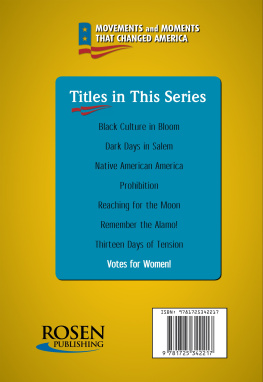
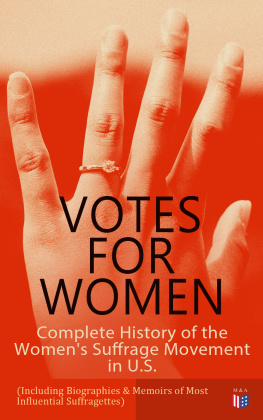

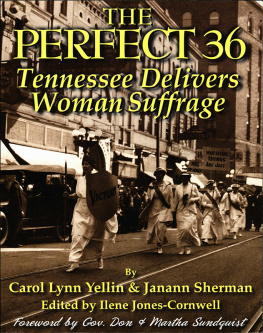
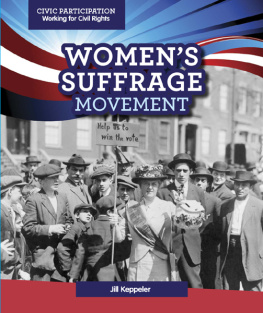
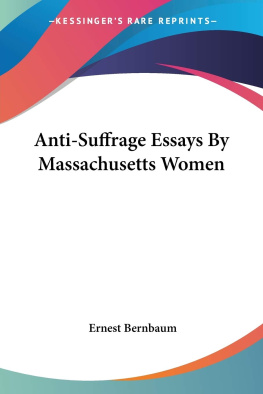
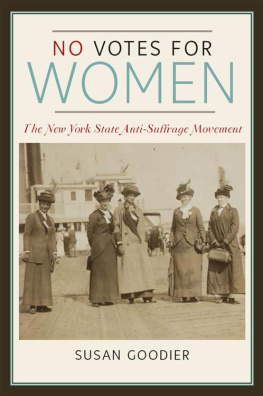
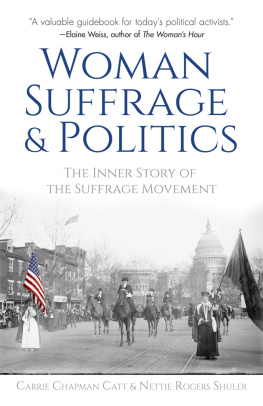







 NELL IRVIN
NELL IRVIN


